 |
 |
 |
| |
HAART Is Associated with Improved Kidney Function in Patients with Impaired Kidney Function at Baseline but Was Associated with Slight Worsening of Kidney Function in Patients with Normal Baseline Kidney Function
|
| |
| |
Reported by Jules Levin
CROI 2010 Feb 16-19 SF
Robert Kalayjian1, R Machekano1, H Crane2, M Kitahata2, A Multani1, R Salata3, J Willig4, B Kestanbaum2, Z Krishasami4, and B Rodriguez3
1MetroHlth Med Ctr, Cleveland, OH, US; 2Univ of Washington, Seattle, US; 3Case Western Reserve Univ Sch of Med, Cleveland, OH, US; and 4Univ of Alabama at Birmingham, US
"- HAART was associated with significant kidney function improvement among patients with baseline renal impairment,
- but also was associated with a small overall decline in kidney function among patients with initially normal kidney function.
- Evaluations to identify correlates of these kidney function changes, including specific antiretroviral agents, are ongoing."
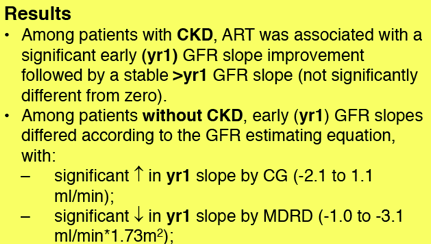
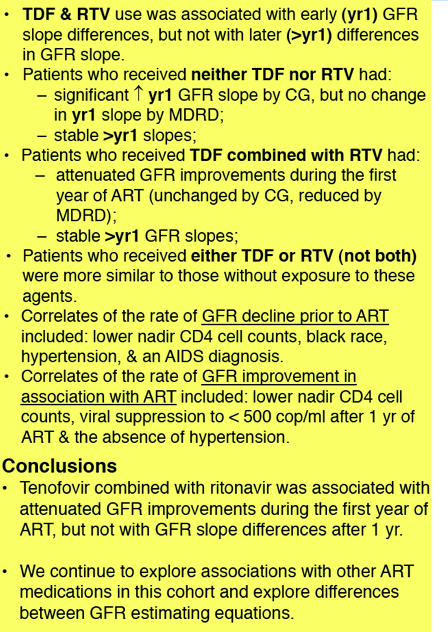
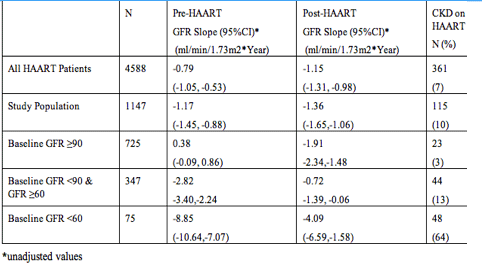
ABSTRACT
Background: To better understand the effects of HAART on kidney function, we compared glomerular filtration rate (GFR) slopes before and after HAART initiation in patients who began an initial HAART regimen and enrolled in a multicenter prospective cohort: the Centers for AIDS Research Network of Integrated Clinical Systems (CNICS).
Methods: GFR slopes before and after HAART initiation, using the modified MDRD equation, were estimated by mixed effects linear models among patients with at least 3 renal measurements before HAART, including a baseline measurement obtained <4 weeks before HAART. Stage 3 chronic kidney disease (CKD) was defined by GFR <60 mL/min/1.73 m2 for >3 months.
Results: Among 4588 patients initiating HAART, 1147 met the inclusion criteria. The median age was 37 years; 75% were male; 49% white, 40% black, 6% Hispanic; 12% co-infected with hepatitis C virus, and 3% co-infected with HBV. Med CD4, plasma viral load (pVL), and GFR at HAART initiation (baseline): 281/cm3, 4.68 log copies/mL, and 99 mL/min/1.73 m2, respectively. Median (IQR) pre-HAART follow-up: 110 wks (51 to 219 weeks); post-HAART follow-up: 132 wks (58 to 250 weeks).
HAART was associated with a greater overall rate of GFR decline in models adjusted for age, race, sex, hepatitis status, and baseline: GFR, CD4 cells, and pVL.
A greater rate of GFR decline also was evident in association with HAART when analyzed according to baseline GFR among patients with normal baseline kidney function, but HAART was associated with a significantly slower rate of GFR decline compared to pre-HAART slopes among patients with baseline renal impairment.
Similar GFR slope differences also were evident among all patients who began HAART in this cohort.
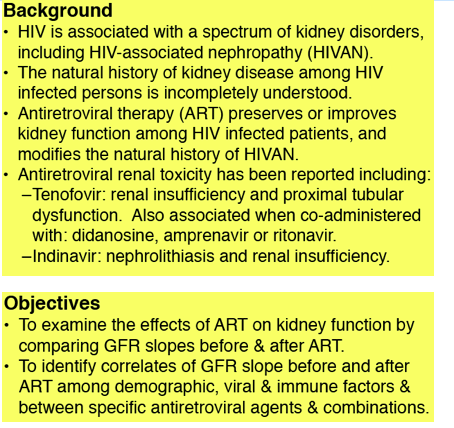
CONCLUSIONS: HAART was associated with significant kidney function improvement among patients with baseline renal impairment, but also was associated with a small overall decline in kidney function among patients with initially normal kidney function. Evaluations to identify correlates of these kidney function changes, including specific antiretroviral agents, are ongoing.
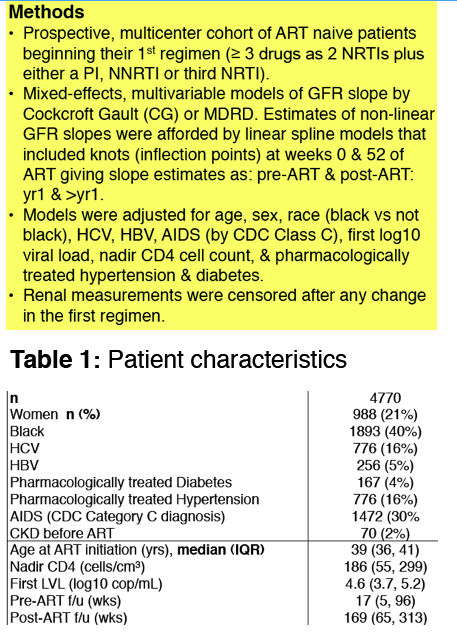
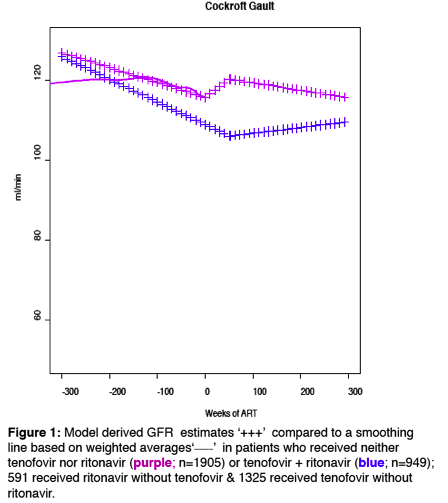
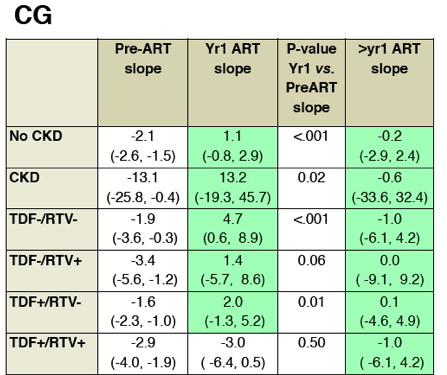
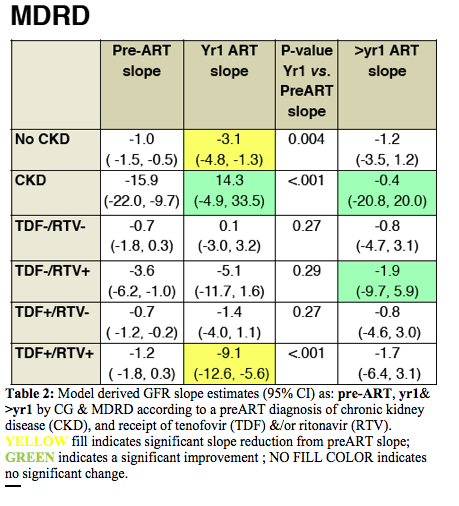
Table 2: Model derived GFR slope estimates (95% CI) as: pre-ART, yr1& >yr1 by CG & MDRD according to a preART diagnosis of chronic kidney disease (CKD), and receipt of tenofovir (TDF) &/or ritonavir (RTV). YELLOW fill indicates significant slope reduction from preART slope; GREEN indicates a significant improvement ; NO FILL COLOR indicates no significant change.
|
| |
|
 |
 |
|
|